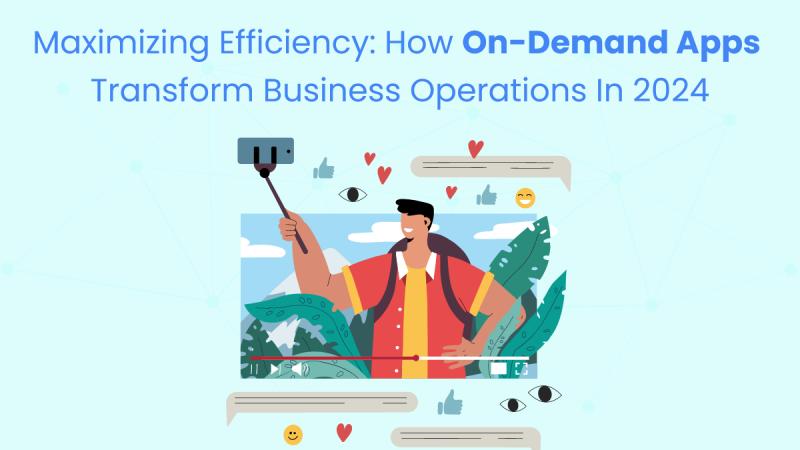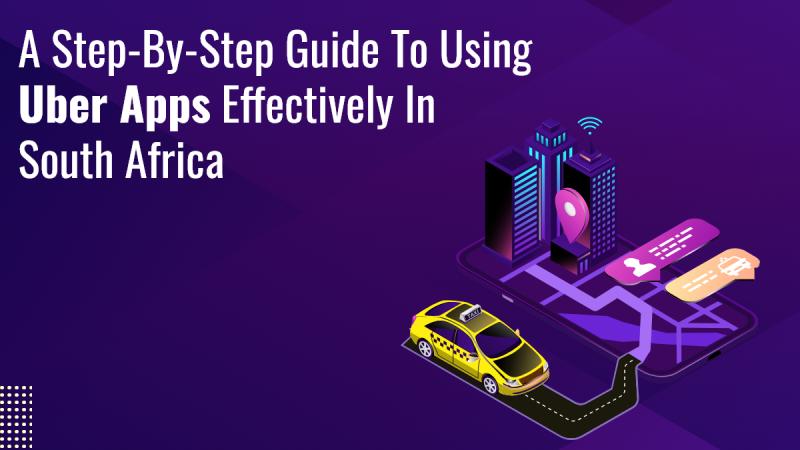How On-Demand Apps Transform Business Operations in 2024

In 2024, on-demand apps have become an integral part of modern business operations, driving efficiency and transforming how companies interact with their customers. These apps offer instant solutions and services, catering to the increasing demand for convenience and speed. As businesses strive to stay competitive in a fast-paced market, on-demand apps provide innovative ways to streamline operations, enhance customer experiences, and boost overall productivity. This blog explores how on-demand apps are revolutionizing business operations in 2024 and how companies can leverage these technologies to maximize efficiency.
The Rise of On-Demand Apps in 2024
Understanding On-Demand Apps
On-demand apps are designed to provide users with immediate access to services or products, typically through a mobile platform. They have gained immense popularity due to their ability to meet users' needs in real-time. These apps operate on the principle of convenience, allowing customers to request services or make purchases with just a few taps on their smartphones.
Key Trends in On-Demand Apps for 2024
Several trends are shaping the on-demand app industry in 2024:
Increased Personalization: Apps are leveraging data analytics and AI to offer personalized experiences and recommendations.
Integration of AI and Machine Learning: AI and machine learning are enhancing app functionality, enabling smarter predictions and more efficient operations.
Focus on Sustainability: Many on-demand apps are incorporating sustainable practices to align with growing environmental concerns.
Transforming Business Operations with On-Demand Apps
Enhancing Customer Experience
On-demand apps are revolutionizing customer experience by providing:
Real-Time Solutions: Customers can access services instantly, reducing wait times and improving satisfaction.
Convenient Access: The ability to request services or make purchases from anywhere at any time enhances convenience.
Personalized Interactions: Apps use data to tailor services and recommendations to individual preferences, creating a more engaging experience.
Streamlining Internal Processes
On-demand apps contribute to operational efficiency by:
Automating Routine Tasks: Automation of tasks such as scheduling, inventory management, and customer communication reduces manual effort and minimizes errors.
Optimizing Resource Allocation: Apps help businesses allocate resources more effectively by providing real-time data on demand and usage patterns.
Improving Communication: In-app messaging and notifications facilitate seamless communication between businesses and customers or within internal teams.
Boosting Operational Efficiency
On-demand apps enhance operational efficiency through the following:
Data-Driven Decision Making: Apps collect and analyze data, providing insights that help businesses make informed decisions and optimize operations.
Scalable Solutions: Apps allow businesses to scale operations easily by adjusting resources and capabilities based on demand.
Cost Reduction: By automating processes and improving resource management, businesses can reduce operational costs.
Case Studies: On-Demand Apps in Action
Ride-Sharing Services
Ride-sharing apps like Uber and Lyft have transformed the transportation industry by:
Reducing Wait Times: Users can quickly book rides and receive real-time updates on their driver’s location.
Enhancing Driver Efficiency: Apps optimize routes and provide drivers with efficient navigation, reducing travel time and fuel consumption.
Improving Customer Satisfaction: Features such as ride tracking, fare estimates, and in-app payment enhance the overall user experience.
Food Delivery Platforms
Food delivery apps like DoorDash and Uber Eats have revolutionized the food service industry by:
Streamlining Order Fulfillment: Restaurants can manage orders efficiently, reducing preparation and delivery times.
Expanding Market Reach: Apps enable restaurants to reach a broader audience without the need for physical expansion.
Enhancing Customer Engagement: Features such as personalized recommendations and loyalty programs increase customer engagement and retention.
Home Services Apps
Home service apps such as TaskRabbit and Handy have changed the way people access home maintenance and repair services by:
Providing Instant Access: Users can quickly find and book professionals for various home services.
Ensuring Quality and Reliability: Apps include features such as ratings and reviews to help users choose reputable service providers.
Improving Efficiency: Service providers can manage bookings, track job progress, and communicate with clients through the app, streamlining operations.
Implementing On-Demand Apps in Your Business
Identifying the Right Use Case
To maximize efficiency, businesses should:
Assess Operational Needs: Identify areas where on-demand apps can address pain points or enhance processes.
Evaluate Customer Demands: Determine what features or services customers would value most in an on-demand format.
Choosing the Right Technology Partner
Selecting a reliable technology partner is crucial for successful implementation. Consider:
Experience and Expertise: Choose a partner with a proven track record in developing on-demand apps.
Customization Capabilities: Ensure the partner can tailor the app to meet your specific business needs and requirements.
Support and Maintenance: Opt for a partner that offers ongoing support and maintenance to address any issues post-launch.
Measuring and Analyzing Performance
To ensure your on-demand app is delivering the desired results:
Track Key Metrics: Monitor metrics such as user engagement, transaction volume, and operational efficiency.
Gather User Feedback: Collect feedback from users to identify areas for improvement and enhance the app’s functionality.
Adjust Strategies: Use data insights to refine your app’s features, marketing strategies, and operational processes.
The Future of On-Demand Apps
Emerging Technologies
The future of on-demand apps will be shaped by emerging technologies such as:
5G Connectivity: Enhanced connectivity will enable faster and more reliable app performance.
Augmented Reality (AR): AR can offer immersive experiences and new ways to interact with on-demand services.
Blockchain Technology: Blockchain can enhance security and transparency in transactions and data management.
Evolving Consumer Expectations
As consumer expectations continue to evolve, on-demand apps will need to:
Adapt to Changing Preferences: Stay ahead of trends and adapt features to meet evolving consumer needs.
Emphasize Sustainability: Incorporate sustainable practices and offer eco-friendly options to align with growing environmental concerns.
Expanding Market Opportunities
Businesses can explore new market opportunities by:
Entering Emerging Markets: Tap into new geographic regions with growing demand for on-demand services.
Diversifying Offerings: Expand app functionality to include additional services or features based on user needs and market trends.
Conclusion
On-demand apps are transforming business operations in 2024 by enhancing customer experiences, streamlining internal processes, and boosting operational efficiency. As businesses navigate an increasingly competitive landscape, leveraging on-demand technology can provide a significant edge.
By understanding the key trends, implementing effective strategies, and staying ahead of emerging technologies, companies can maximize the benefits of on-demand apps and drive sustained success. Discover how our on-demand app development company maximizes business efficiency in 2024. Transform your operations with cutting-edge technology and expert solutions. As the industry continues to evolve, on-demand apps will remain a crucial tool for businesses seeking to meet the demands of modern consumers and optimize their operations for the future.









Comments